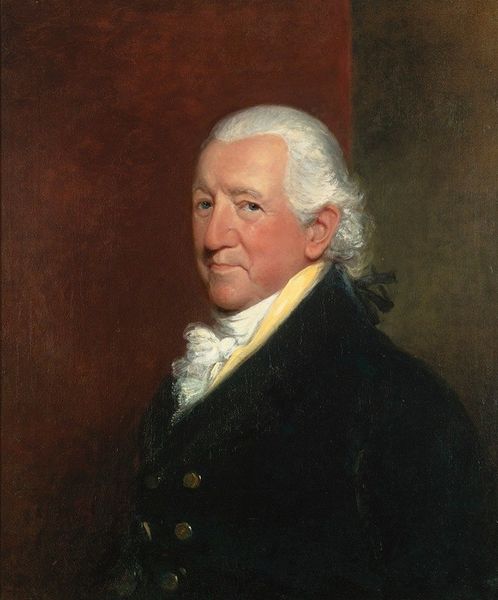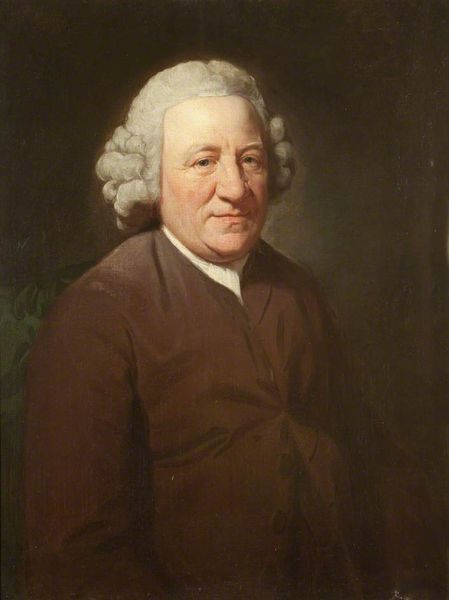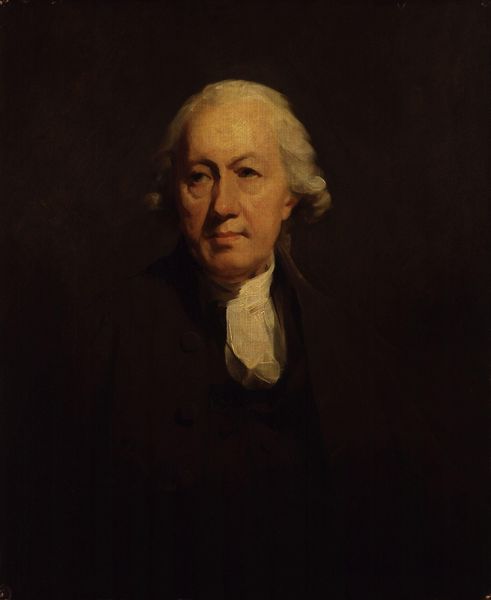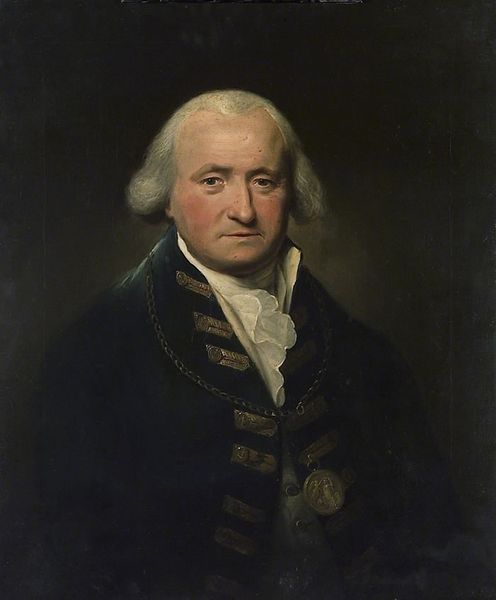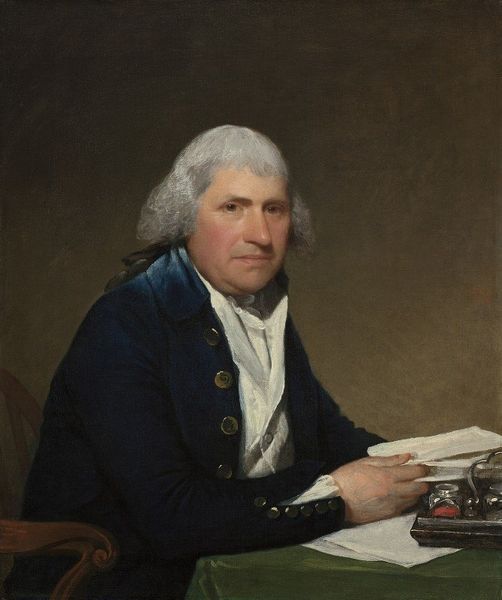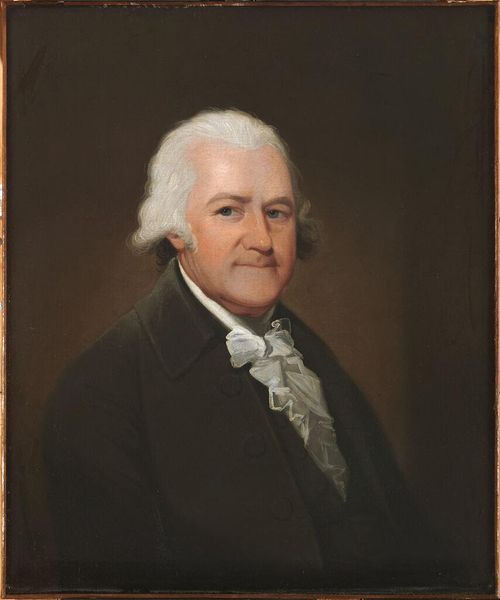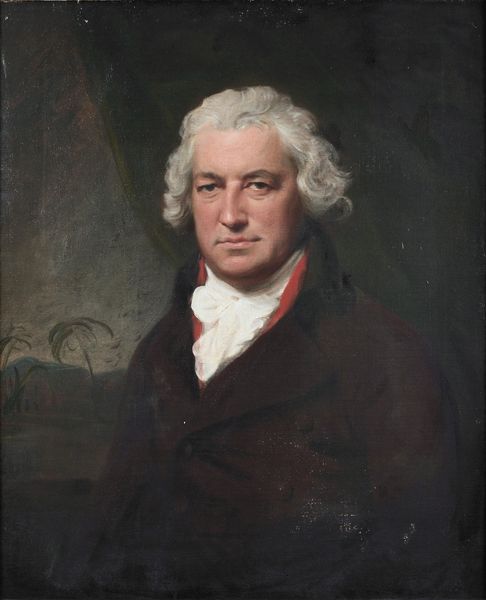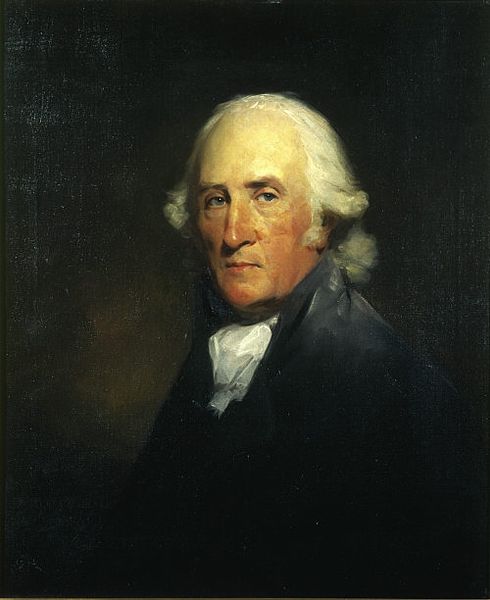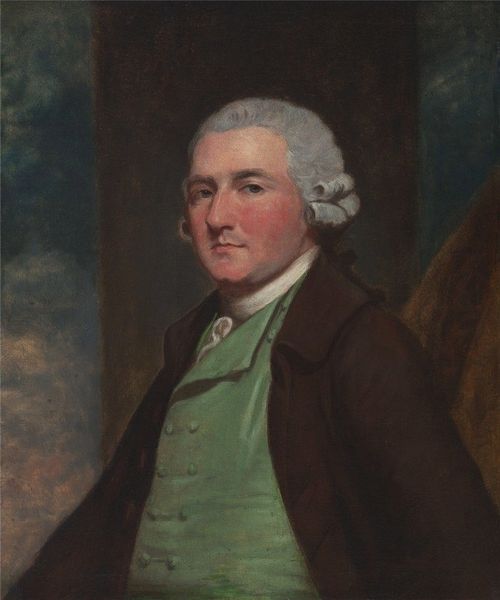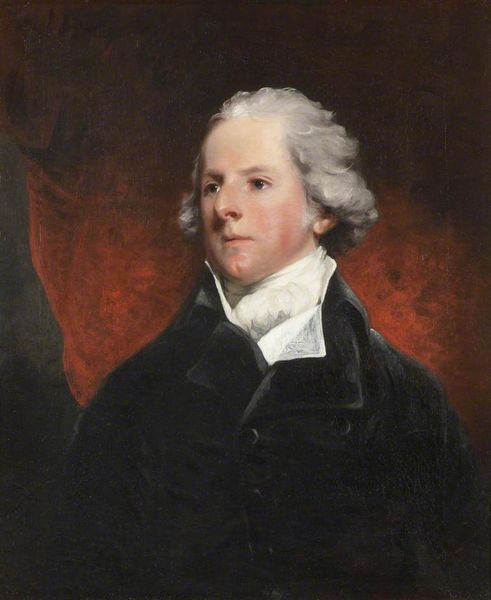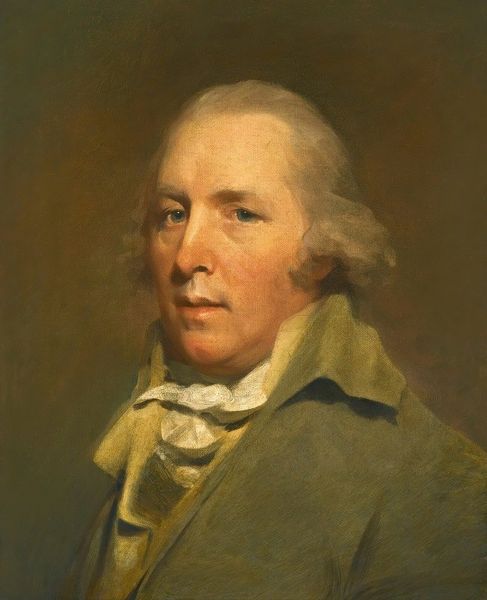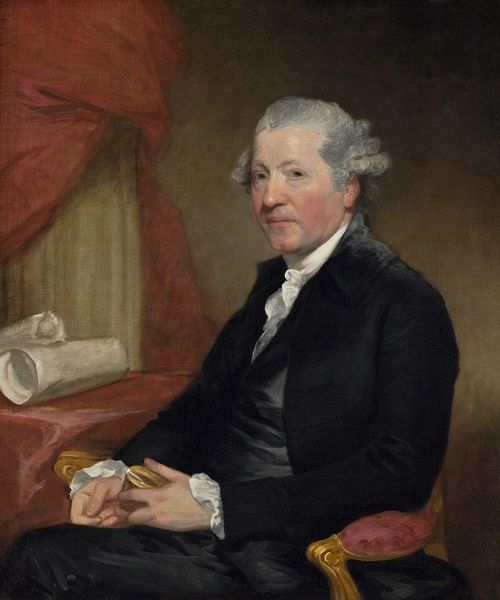
painting, oil-paint
#
portrait
#
figurative
#
portrait image
#
portrait
#
painting
#
oil-paint
#
portrait subject
#
portrait reference
#
portrait head and shoulder
#
romanticism
#
history-painting
#
facial portrait
#
portrait art
#
fine art portrait
#
realism
#
celebrity portrait
#
digital portrait
Copyright: Public Domain: Artvee
Curator: Let’s turn our attention to this striking piece – a painting identified as the "Portrait of Thomas Wood," dating back to 1790. The masterful hand behind this oil portrait belongs to Henry Raeburn. What catches your eye initially about this artwork? Editor: The immediacy of his gaze is undeniable, isn't it? He exudes such quiet self-assurance, like he knows a secret or two, but won’t be in any rush to tell. Also, that wig! Curator: Precisely, portraits from this era were not merely about likeness; they communicated social standing. Thomas Wood's powdered wig, the quality of his clothing—all serve as visual cues about his position in society. Wigs in particular were deeply symbolic in the late 18th century, associated with authority and professional roles. Editor: It’s interesting how fashion operates as an immediate signifier of status and taste across different eras. The lace at his wrists feels rather ostentatious now, but I’m certain that back then it whispered wealth. I think those gestures of finery, framed in an otherwise simple and somber image, speak volumes about his character. Curator: Note also how Raeburn utilizes light and shadow to create depth and dimension. The contrast is skillfully employed to draw focus to Wood's face, inviting viewers to engage with his expression and perhaps discern his personality. Editor: It also feels very modern in some ways, that stark contrast. I get the feeling the man beneath those markers of status—wig and lace—might even be questioning them himself. He almost has a mischievous gleam in his eye that seems to want to break through the surface. Curator: Fascinating. So what does it evoke in you as you spend a bit more time observing it? Editor: He evokes the sense of someone standing at a moment of transition. The Old World signifiers of rank and identity juxtaposed against a dawning modernity where individual expression becomes much more desirable. Almost rebellious, as I think of it now. Curator: Indeed. It is striking how a single image can reflect so much about cultural shifts and continuities through carefully chosen visual symbolism. Editor: I couldn’t agree more. These glimpses of human life so long ago leave you wondering.
Comments
No comments
Be the first to comment and join the conversation on the ultimate creative platform.

